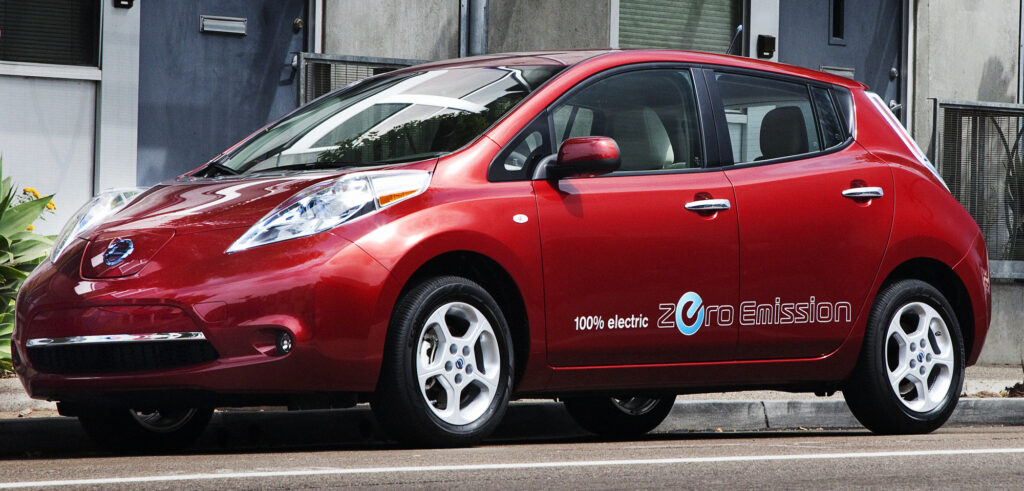A Car’s Life Can Extend After It Leaves the Road
This article may contain affiliate links.
Do you make an effort to recycle food waste, plastics, batteries, and so on? If you’re worried about how your car will eventually be disposed of, fear no more – it’ll likely be turned into scrap metal by the auto recycling industry. This industry is one of the biggest in the United States; approximately 7,000 car recycling businesses generate a combined $25 million annually. Pretty impressive, right? In most cases, a minimum of 80% of each junk car is recycled, which is not bad for a machine that uses so many different materials.
When we say “junk car,” that could mean a lot of different things. For the purposes of this discussion, it refers to a car that’s basically just junk–all that’s left for it is to be recycled. If you have this type of junk car on your hands, you could probably take it to a junkyard and get between $50 and $300 for it. However, the term can also refer to a car that’s been totaled and given a salvage title. In that case, you could potentially make a good bit of money from a junk car, even if it won’t start. There are plenty of companies that’ll give you cash for that car and tow it away to boot.

As you might imagine, car recyclers aren’t picky about what they recycle. As long as the vehicle still has plenty of usable metal inside (as in, it hasn’t rusted to pieces), they’ll take it. SUVs, trucks, motorcycles, cars and everything in between can be recycled. Before they’re able to access the steel and other metals, though, they have to go through a multi-step dismantling process. Here’s how it works.
Fluids Are Removed
The average car contains engine oil, brake fluid, gasoline and more–and it all has to go. Not into the ground; car recycling centers are very strictly regulated when it comes to disposing of car fluids. These and other substances can wreak havoc if they seep into the groundwater supply, so there are some fairly heavy penalties for any recycling center that doesn’t properly dispose of them.
They don’t just do it because it’s the law, though; they also do it to prevent fires from flammable gasoline or toxic fumes as customers look for usable parts in the salvage.
Usable Parts Are Salvaged
Auto recycling centers will pay you by the ton if you sell them your junk car, since they’re mainly after the steel. That isn’t the only valuable part of an old car, though; there are often quite a few parts that can be taken out and re-used in other vehicles. A lot of engine parts have plenty of life left in them, as well as things like radios, tires, plastic reservoirs, and rubber hoses. Auto recyclers often pass their vehicles along to junkyards to be stripped of these parts, which makes it easier for them to get to the steel, iron, and other metals for recycling. The junkyard won’t get all the non-metal parts off, but they’ll remove a considerable amount of them.
The Car Frame Is Shredded
It doesn’t take much imagination to picture what happens here. Once the frame has been shredded, it’s been turned into hand-sized pieces of ferrous and non-ferrous metal. They’re then sorted using a large magnet and prepared for shipment.
In addition to the metals, materials known as “auto fluff” are left behind, and those aren’t recyclable. It could be glass from the windshields, rubber from tires or hoses, wood from the interior or dirt from who knows where. Usually included are metals like cadmium and lead, which are unfortunately dumped into landfills along with the rest of the auto fluff. This definitely isn’t an ideal way of doing things, but the hope is that future innovations in recycling technologies will come up with a solution.
Shredded Metals Are Mixed with New Metals
Recycled steel is a major component in many new cars, but auto makers don’t use the metal as is; first the auto recyclers have to mix it with new steel for increased strength. This produces millions of tons of steel each year, which decreases mining emissions and makes the process of car manufacturing more cost-effective.
Recycled Metals Are Shipped to Manufacturers
The life cycle of the steel begins again as it’s sent to auto makers, who will use it to make new vehicles. Interestingly, this step can influence the amount of money a car recycling center will give you. The further away they are from an auto manufacturing plant, the less they’ll pay you. Since they have to account for transportation costs when calculating their profit margins, the money they spend to take the steel to a distant plant will probably come out of your check.

How Many Parts Can You Get from a Junk Car?
If the vehicle isn’t too old or deteriorated, it’s often possible to salvage quite a few parts. Junkyards sell these parts to mechanics and individuals alike; anyone who needs a specific part to repair a vehicle should check with their local junkyard.
As it happens, used car parts are selling at a premium just now because of shortages in the new car industry. Supply chain disruptions are making new cars harder to come by, which has had a trickle-down effect on junk cars. People can’t buy the new car they want, so they get a used one. Then all the used cars get bought up, so people start repairing their current vehicles. Since they can’t get new car parts, they settle for used ones that have been salvaged from junk cars. These used parts are usually pretty reliable, but that also depends on which part you’re talking about. It can be hard to tell how much longer a transmission will last, for instance, but a computer component or a stereo can easily be tested. If you aren’t sure, just talk to a trustworthy mechanic; they’ll be able to tell you what’s going on.
EVs—and their Batteries—Get Recycled, Too
Though they’re relatively new on the market, electric vehicles go through much of the same process as described above, with one big exception. EV batteries are the major cost component for electric cars because of expensive minerals contained within them. That is driving the creation of a new part of the automotive recycling business focused on extracting those minerals and reinserting them into the automotive supply chain. Some studies show that a significant portion of the demand for battery materials could be met by recycling.

1 thought on “How Old Cars Get Recycled from Start to Finish”